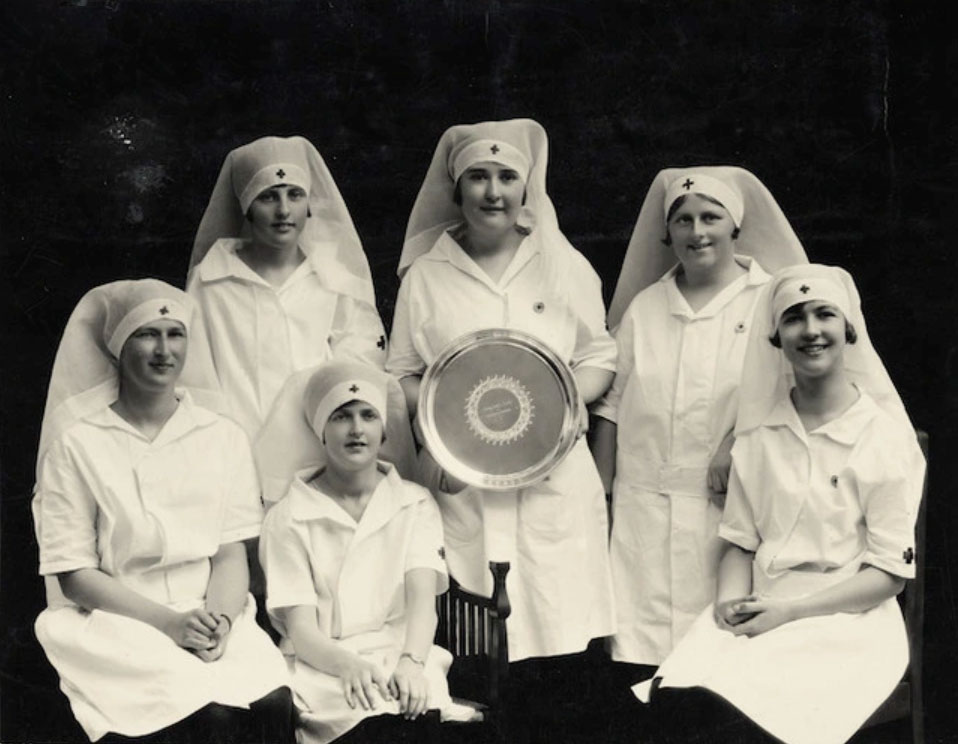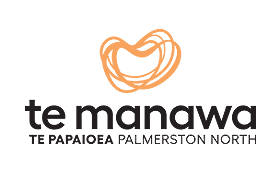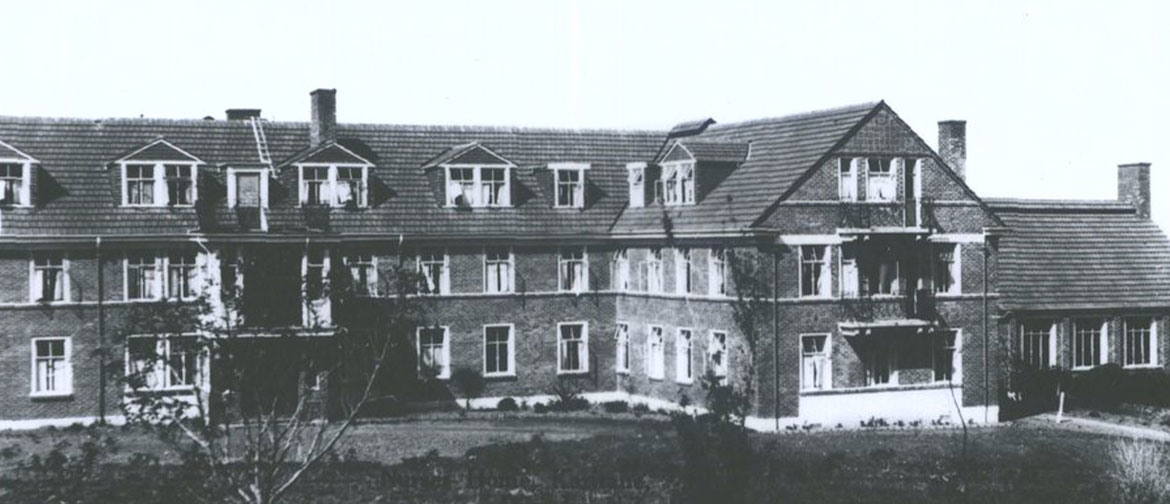Finally we go in search of Sister Lenora Coldstream, the person who donated the puzzle to Te Manawa – known in 1975 as the Manawatū Museum. Piecing together a picture of her life has involved a lot of detective work for Cindy Lilburn and myself.
Lenora was born in 1915 and died in 2005, aged 90. Some of the time I’m going to call her Miss Coldstream, as a reminder of what was customary and polite when she was a young woman. I’ll also refer to her as Sister Coldstream, since she rose to a senior nursing position that carried with it the title of ‘Sister’.
The puzzle was probably a present to her on her ninth or tenth birthday. Her younger brother and sister would probably have been too young to solve it. We know she must have been very conscientious for the puzzle – full of small pieces that could easily go up the vacuum cleaner – to survive with nothing missing.
Lenora also gave the Museum a canasta card deck, two cribbage boards and a boxed set of 28 dominoes. Like the puzzle, they were donated in 1975, the year after her surviving parent’s death.
These games, like the puzzle, must have been old friends to the family, providing entertainment on wet days and long evenings. Evidently Miss Coldstream, now on her own, had no further use for them.
Her parents, Victor Coldstream (b. 1886) and Olive Elizabeth Coldstream (née Freeman, b. 1891), had a Palmerston North background but moved to Wellington. They married on 15 May 1915 at St Paul’s Pro-Cathedral, Wellington, now known as Old St Pauls.
For most of their time in Wellington they lived at 99 Tinakori Road, up the road from Premier House.
Victor had a job as storeman with the Wellington Harbour Board. His mother, Ida Louisa Coldstream, had been a district nurse, ending her career at Raetihi. She would have had many a story to tell of Raetihi, Horopito, and other rough timber and railway towns in the central North Island.
Maybe she inspired her granddaughter Lenora to become a nurse.
Olive attended Campbell Street School and then the Palmerston North Technical School. She was good at music and the most popular hockey player in her year.
Lenora herself attended Thorndon Associated Normal School, graduating with proficiency (the highest grade). She went on in 1928 to Wellington Girls’ College. Her mother supported both these schools by serving on the parents’ association.[i] Olive was also active in the Mothers’ Union.
During Lenora’s first year at high school her ten-year-old brother Victor Page Coldstream died.
In 1934, aged 19, she started training as a nurse at Stratford Hospital. This was a three-year course, combining work and study. Lectures were given at the hospital by doctors and senior nurses.
As elsewhere in Aotearoa, trainees lived in the nurses’ home attached to the hospital. The furniture in a nurse’s room was minimal: a single bed, a set of drawers and a cupboard.
Trainee nurses like Lenora were on probation for their first year. Along with the other nurses, she would have had to put up with curfews and room checks. A bed without neatly tucked hospital corners would mean all the bedding being tossed onto the floor and the nurse told to make the bed again.
Having qualified as a registered nurse, probably at the end of 1936, Lenora stayed on at Stratford for a few more years. 1939 was a big year for her: she qualified first as a maternity nurse and then as a midwife, one of the few who passed with honours in the State Midwifery Examination.[ii] To top off these qualifications she went south to Dunedin to undertake Plunket training at the Karitane Harris Hospital (pictured above).
Lenora was appointed as sister at the Palmerston North Hospital maternity annexe in 1941. Soon she was senior sister. However, she didn’t stay long, moving to a similar position at Kaitaia in 1943.[iii]
There we catch a few glimpses of her. William Johnson, hospital porter, thanks Sister Coldstream and the nurses of the Kaitaia Annexe for their kindness and attention to his wife. Lenora also appears in navy sheer satin and blue coat and hat at a fellow-nurse’s wedding.[iv]
By 1945 she had moved on again to Timaru Hospital. During her stay there dreadful news came. Her younger sister Elizabeth Olive had died suddenly at the age of 25. Elizabeth had only recently completed her BA at Victoria University College.[v]
Perhaps to be within easier reach of her parents, who had now lost their other two children, Lenora took up a position at the Public Hospital in Blenheim (today’s Wairau Hospital), living in the nurses’ home at Holmdale.
By 1957 she was back in Wellington, living with her parents at 99 Tinakori Road. These three surviving members of the family made their return to Papaioea around 1969. Their address was 207 Vogel Street in Roslyn.
Victor’s stay was brief, as he died in 1970. Lenora remained to look after her mother, who by now was an invalid; Olive died in 1974. She stayed on in the house on her own.
These are the pieces of Lenora’s life that Cindy and I have been able to track down so far. We’ve used mostly Papers Past and the Ancestry.com website, which you can access through the Palmerston North Public Library.

Wellington Girls’ College House B team, winners of the Home Nursing Competition and the Lady Jacobina Luke Silver Salver. Standing (left to right): Lenora Coldstream, Nancy Caughley (captain), Eva Webber. Sitting: Nan Berry, Joy Keating and Sybil St. George. Photo P.H. Jauncey (Evening Post, 28 November 1929).
Clearly Miss Coldstream experienced much sadness in her life. Her brother and sister died while she was still young. She nursed two invalided parents and was the sole survivor in her family. So let’s end this blog with what must have been a happy memory for Lenora.
At age 14, Lenora was one of a team of six that entered a Home Nursing competition run by the Red Cross. The prize was a gorgeous silver salver presented by Lady Jacobina Luke, the Mayoress of Wellington.
Lady Jacobina was one of the signatories of the Women’s Suffrage petition and an early supporter of the Red Cross in Aotearoa. From the outbreak of the First World War she joined with other leading women in Wellington to organise volunteers to provide extra supplies and ‘home comforts’ for the departing soldiers.[vi] Knitwear such as jerseys and scarves for the cold winters in Belgium and France were a staple item, as was shortbread, since it kept well. [vii].
On the day of the competition, the Red Cross rooms were filled with girls, Lenora among them. They wore fresh white uniforms and nurses’ veils. The reporter for the Evening Post of 28 November 1929 thought they all looked ‘very trim and business-like’.
Teams had to demonstrate a range of skills, including bed-making, bathing patients and applying dressings. The idea behind Home Nursing was to teach future wives and mothers, possibly living deep in the back blocks, how to look after unwell or injured family members until a doctor could make the journey.
Observing the demonstrations with an eagle eye were four judges: Miss Lambie and Miss Moore, of the Health Department, and Nurses Whitelaw and Allen.[viii]
When the four judges announced their verdict, Lenora and her team-mates had scored well ahead of their rivals and the silver salver was theirs.
I like to think that Lenora and her family had the salver on show on their mantelpiece for a good long while.
[i] ‘Girls’ Colleges’, Evening Post, 15 March 1938, p. 15.
[ii] ‘Maternity Nurses’, Evening Post, 9 January 1939, p. 11; ‘Nurses & Midwives’, Evening Post, 30 December 1939, p. 11.
[iii] ‘Personal’, Manawatu Times, 22 April 1941, p. 3; ‘Women’s World’, Manawatu Standard, 18 May 1943, p. 3; ‘Personal’, Manawatu Times, 18 May 1943, p. 2.
[iv] ‘Thanks Notice’, Northland Age, 19 October 1944, p. 1; ‘Wedding of Widespread Interest’, Northland Age, 25 May 1944, p. 4.
[v] ‘Deaths’, Evening Post, 21 November 1945, p. 1.
[vi] Learn more about Jacobina Luke and her work to support the troops.
[vii] Margaret Tennant is my informant for this detail.
[viii] ‘Red Cross Work’, Evening Post, 28 November 1929, p. 7.




